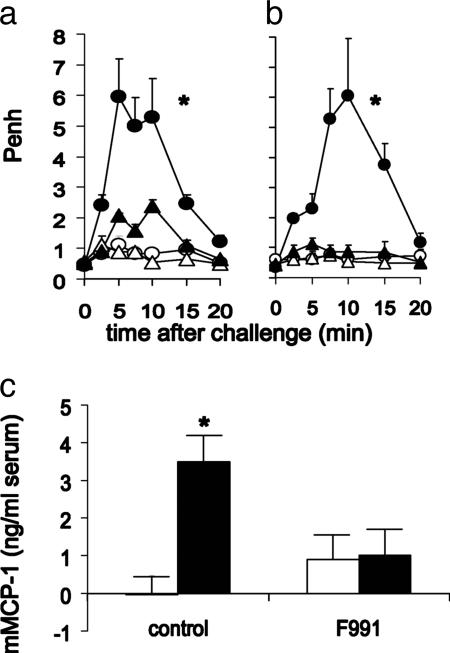Fig. 5.
The LC antagonist F991 inhibits bronchoconstriction and mast cell activation found after challenge of mice immunized with TNP-specific LCs. TNP-specific LC- (black circle) but not vehicle- (open circle) immunized mice showed an acute bronchoconstrictive response after challenge. (a) Simultaneous injection of F991 (200 μg per mouse) and TNP-specific LCs (black triangle) resulted in a profound reduction of bronchoconstriction. (b) Intranasal administration of F991 (200 μg per mouse) (black triangle) completely inhibited the TNP-specific LC-induced bronchoconstriction. i.v. or intranasal application of F991 did not influence Penh values of vehicle-immunized mice (open triangle); n = 5–6; *, P < 0.05, for the whole curve. (c) mMCP-1 levels in serum of TNP-specific LCs (black bars) are enhanced compared with vehicle-sensitized (open bars) mice 30 min after challenge. Intranasal application of F991 (200 μg per mouse) resulted in inhibition of increases in mMCP-1 serum levels of TNP-specific LC-immunized mice; n = 6; *, P < 0.05.

